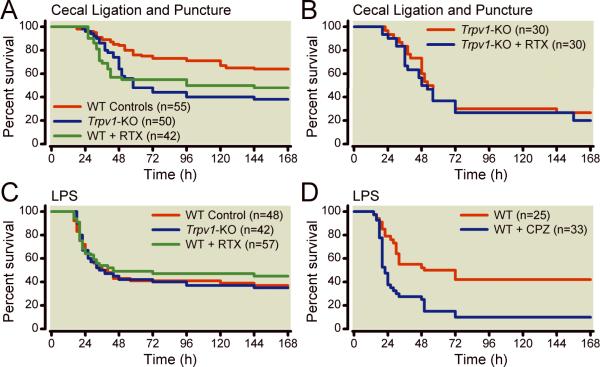Figure 1.
Effect of disruption of transient receptor potential vanilloid 1 (TRPV1) on survival after polymicrobial sepsis (cecal ligation and puncture) or lipopolysaccharide challenge. Panel A shows effects of TRPV1 disruption by genetic deletion (Trpv1-knock out, KO) or pharmacologic ablation with intrathecal resiniferatoxin (RTX) [WT (wild-type) control group includes 55 WT animals (20 receiving no treatment and 35 vehicle-treated WT combined); Trpv1-KO group includes 50 animals (20 Trpv1-KO mice receiving no treatment and 30 receiving vehicle)]. Panel B shows the effect of intrathecal resiniferatoxin in animals lacking the TRPV1 gene (Trpv1-KO) after cecal ligation and puncture. Panel C shows the effects of TRPV1 disruption by genetic deletion or pharmacologic ablation with intrathecal resiniferatoxin after lipopolysaccharide-induced toxicity [WT control group includes 48 WT animals (21 receiving no treatment and 27 vehicle-treated WT combined)]. Panel D shows effects of TRPV1 disruption with capsazepine (CPZ) after lipopolysaccharide challenge.

